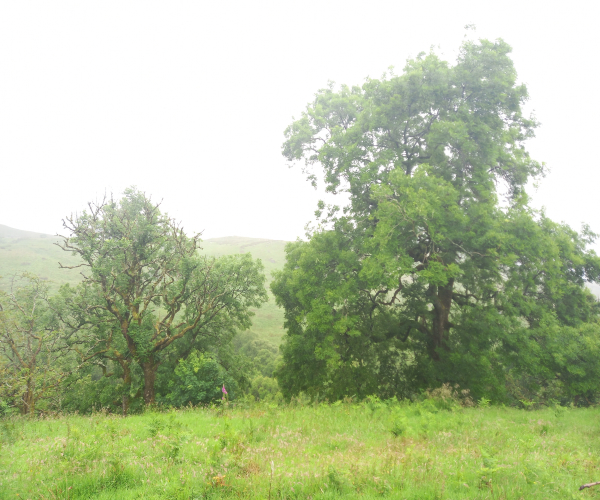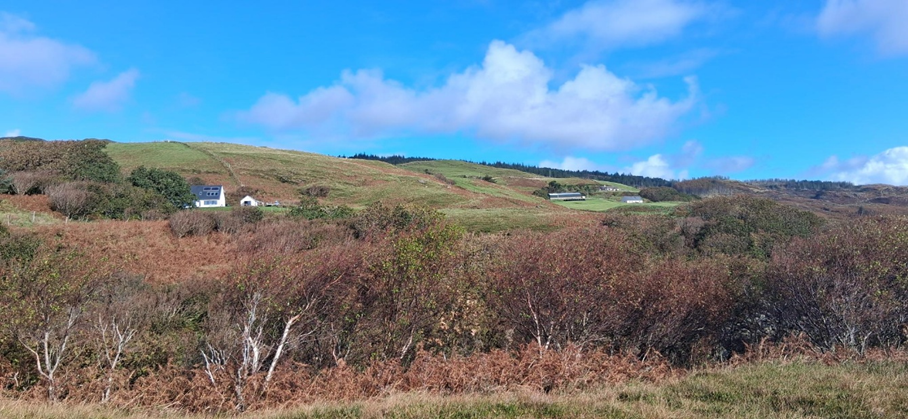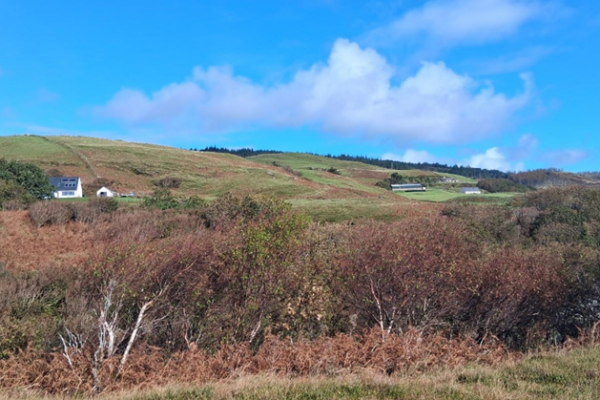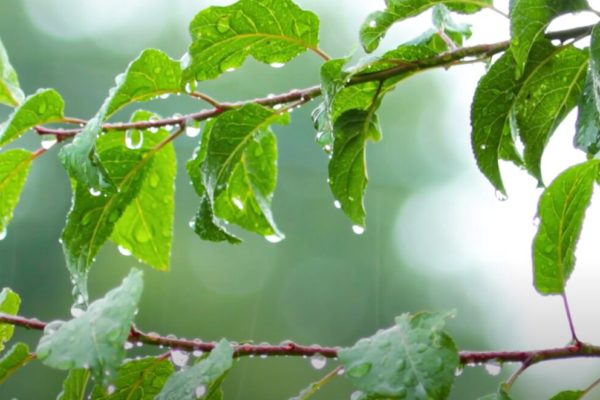Managing Ash Dieback
8 July 2025Ash dieback fungus was originally found at several sites in Scotland on newly planted sites that had imported trees from the Netherlands. By 2015 it was clear that it would be impossible to stop the spread of the disease. By 2020 the disease was prevalent in many of the trees in the landscape and was starting to affect mature specimens. It was later identified that it had been present in the United Kingdom since 2004.
Cause and symptoms
Ash dieback is caused by the fungus Hymenoscyphus fraxineus, and the infection source is the spores on the dead leaves and stems which are spread by the wind. Like all pests and diseases, human movement of infected material can play a large part in spreading infected material.
Infection results in leaf loss and canopy dieback in young trees that is fatal. In mature trees the disease weakens the tree and then a secondary fungus, such as honey fungus, Armillaria mellea, invades the tree and kills it. Typically, an early sign is weeping shoots which turn black and die. In the following year the tree might resprout, but the same effects typically occur. This pattern happens repeatedly until the tree eventually dies.
Management
Under both civil and criminal law, an owner of the land on which a tree stands has responsibility for the health and safety of those on or near the land, and has potential liabilities arising from the falling of a tree or branch. Complete removal of ash trees from an ownership is considered unnecessary as you could be removing healthy trees that are also resistant to the disease.
The location of a tree will determine if you need to do any work to it - is it within proximity of a road or well-used path (Red Zone)? Does an occasional walker pass underneath it (Amber Zone)? Or does no one walk under the tree (Green Zone)?
A system has been adopted by various local authorities scored on the percentage of dead material within the crown of the tree.
- Class 1: 100% to 75% live crown.
- Class 2: 75% to 51% live crown.
- Class 3: 50% to 26% live crown.
- Class 4: 25% to 0% live crown.
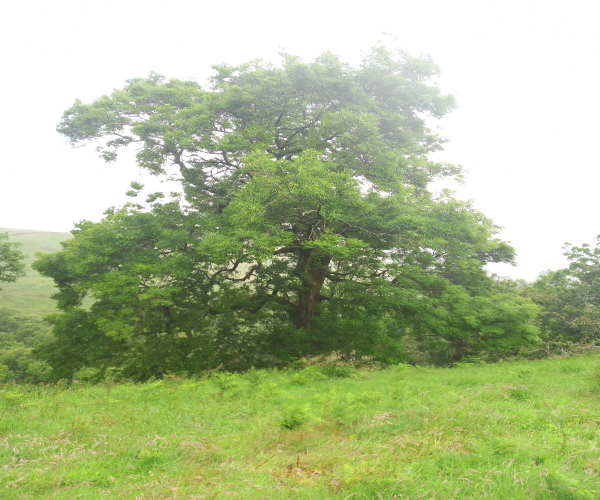
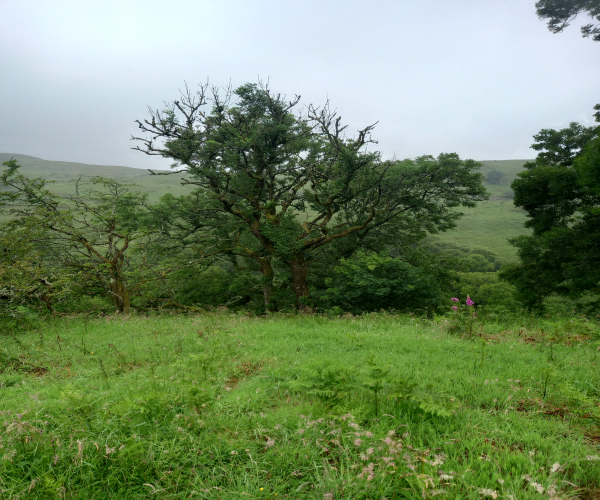

Class 1
Class 3
Class 4
Recommendation action Class 1 and 2: inspect the tree once a year. In the case of Class 2 consider seeking professional advice if some sort of work will be required, particularly if it’s beside a high footfall area (Red or Amber Zones).
Recommendation action Class 3 and 4: seek professional advice in Red or Amber Zone areas, minimum requirements would likely be a crown reduction.
Photo shows class 1 and class 3.
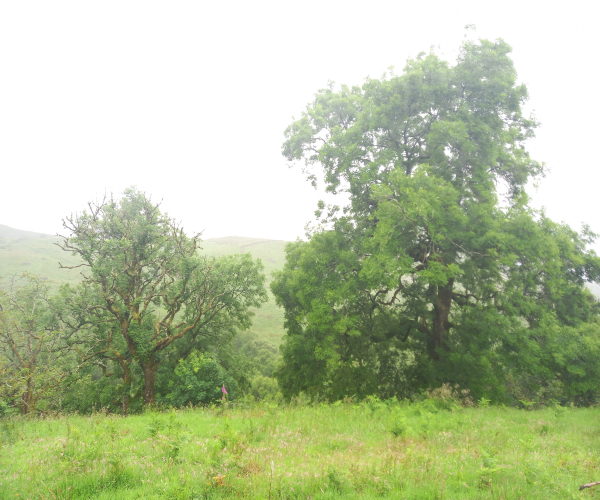
Tree-felling infected trees
Felling infected ash trees is more hazardous than other species when felling from the ground due to the large amount of dead wood present in the crown and the secondary infection of honey fungus. Honey fungus affects the strength properties of the wood and so a wider hinge when felling is recommended.
Out of the four classes of decline, 3 and 4 are the riskiest due to the amount of dead wood present. Mechanical dismantling or felling is recommended, ideally with a reinforced cab. The next best felling technique is winch assisted or remote-control wedge. It is critical that the feller retreats from the base of the tree and neighbouring ash trees before winching commences as it is highly likely that debris will be dislodged. Using wedges that require hammering in is not recommended as they will likely loosen dead branches from above. Avoid climbing a declining ash tree as the dead branches are brittle - it is recommended to use a cherry picker to aid crown reduction.
Resistance and breeding
As ash trees have a large genetic pool the likelihood of some trees surviving is 10 - 20% of the population, this will likely be mature specimens where the fungus is not capable of killing the tree on its own.
Ash breeding for high value timber was started in 1993 as it was considered to have the most potential to improve the form of the species. Since 2012 the focus has been changed from timber to tree health, and out of the existing trials of over 40,000 trees, 412 trees were considered highly tolerant. The second phase of the work testing the degree of tolerance will be completed this year. During the annual health monitoring some trees show healed lesion and a disease-free canopy, indicating a remarkable ability to overcome infection. It is hoped that by the mid-to-late 2030s the orchards will start to produce tolerant seed for planting.
Alternative species
There are several native and non-native species that could be used as a replacement for ash. Native species include oak, birch and aspen, while non-native species include beech and sycamore. Sycamore is considered the most suitable species to fill ash in native woodlands as it is already present.
Sign up to the FAS newsletter
Receive updates on news, events and publications from Scotland’s Farm Advisory Service

